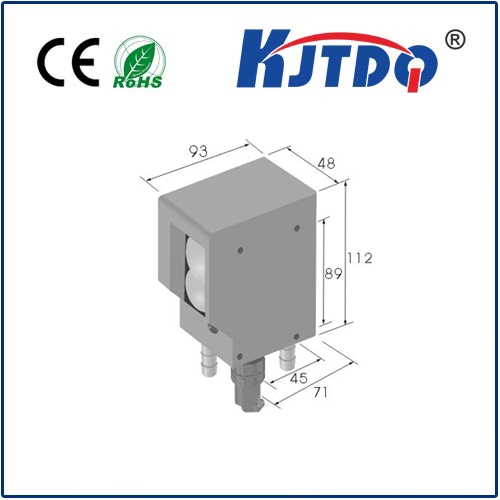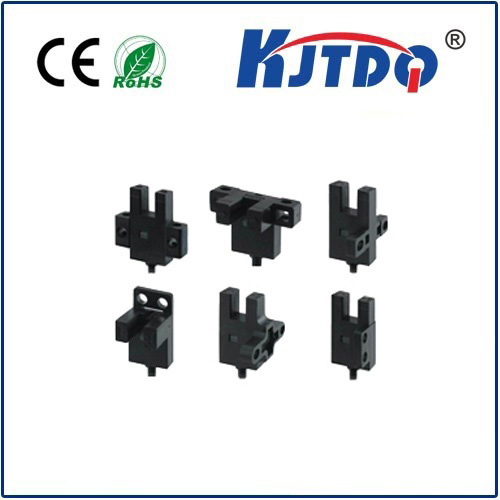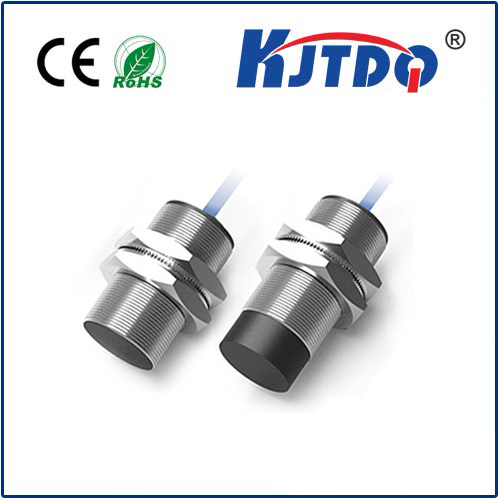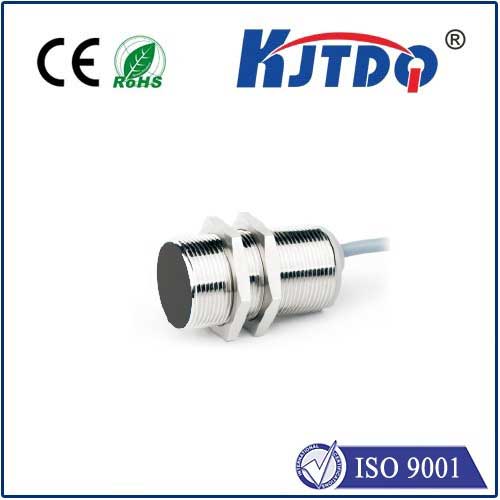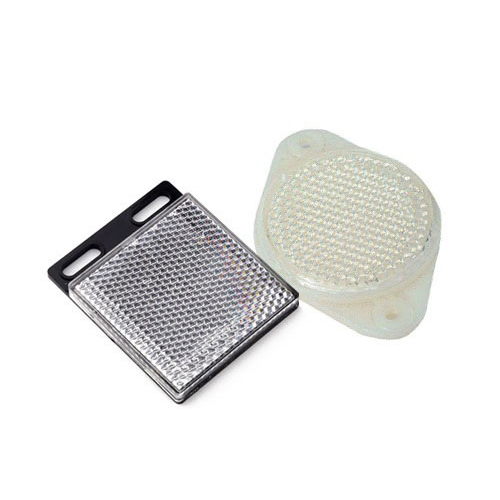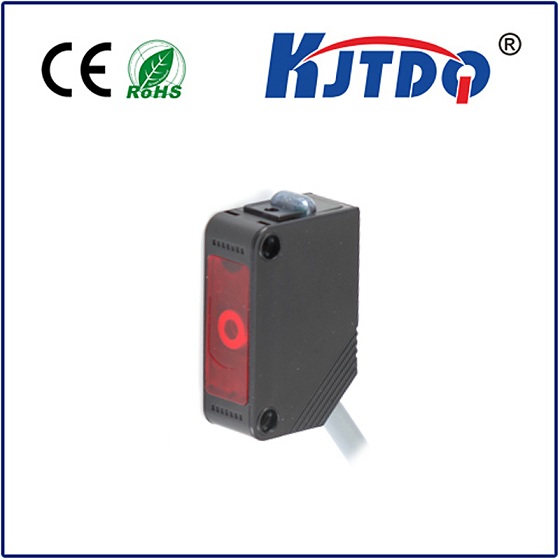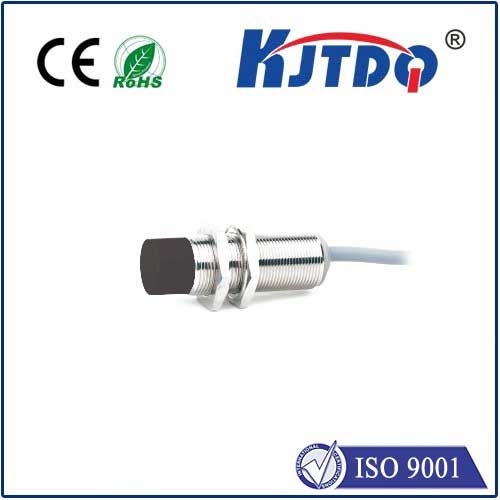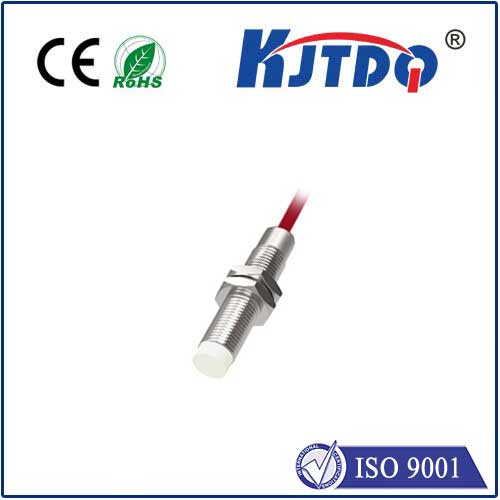E3T-ST14-M5J 0.3M fiber optic photoelectric sensor
- time:2025-09-27 01:37:01
- Click:0
Unlock Precision Detection: Mastering the E3T-ST14-M5J 0.3M Fiber Optic Photoelectric Sensor
Industrial automation thrives on precision. Consider a high-speed assembly line bottling delicate pharmaceuticals. A standard sensor struggles in the cramped space near the filling nozzle. Vibrations cause false triggers. Cleaning chemicals threaten electronics. Downtime looms. This is the critical juncture where specialized solutions like the E3T-ST14-M5J 0.3M fiber optic photoelectric sensor become indispensable. More than just a component, it represents a targeted approach to overcoming persistent detection challenges in demanding or confined environments.
Why Fiber Optics? The Core Advantage
Traditional photoelectric sensors, while robust, often hit limitations. Bulky housings won’t fit tight spots. Metallic environments cause interference (EMI/RFI). Sensing distances max out. Intense heat or corrosive washes damage electronics. Fiber optic photoelectric sensors elegantly sidestep these hurdles. They physically separate the sensing point (the fiber optic head) from the electronic amplifier unit.
The 0.3M fiber optic photoelectric sensor leverages this principle. The sensing head, often incredibly compact, is passive – containing no electronics. This makes it inherently:

- Small & Lightweight: Fits into spaces inaccessible to conventional sensors.
- EMI/RFI Immune: Ideal for welding cells, near motors, or high-frequency equipment.
- Chemically Resistant: The head (often glass or specialized plastic) withstands harsh solvents, oils, and cleaners that damage sensor bodies.
- Temperature Tolerant: Capable of operating near heat sources where electronics would fail.
- Electrically Safe: Non-conductive materials enable safe use in explosive atmospheres (subject to appropriate approvals).
The E3T-ST14-M5J configuration exemplifies this power, tailored for specific applications.
Decoding the Model: E3T-ST14-M5J 0.3M
Understanding the nomenclature reveals the sensor’s precise capabilities:
- E3T: Identifies this as part of Omron’s extensive E3Z/ E3T series of fiber optic photoelectric sensors, known for reliability and flexibility.
- ST14: Specifies the fiber unit type. This denotes a slit-type housing. This unique shape is crucial for applications requiring precise beam alignment or detection through narrow gaps (e.g., verifying thin materials like paper, foil, or small component presence on conveyors). The slit helps confine and direct the light beam.
- M5J: Indicates the mounting and connector style:
- M5: Signifies a miniature M5 threaded barrel mount. This tiny diameter is key for installations where space is at an absolute premium. Think PCB verification, micro-component assembly, or inside intricate machinery.
- J: Designates a pigtail cable with a jacketed (protected) fiber end. The 0.3M specifies the length of this fiber optic cable connecting the sensing head to the amplifier unit. This relatively short length offers neatness and minimizes slack in compact control panels or machinery.
- 0.3M: Explicitly states the fiber optic cable length is 0.3 meters, critically defining installation flexibility.
Key Applications: Where the E3T-ST14-M5J Excels
This sensor’s unique combination of slit-type detection, ultra-compact M5 threaded barrel, and fiber optic resilience makes it a champion in several demanding scenarios:
- Micro-Part Detection: Verifying the presence or absence of extremely small electronic components, watch parts, or medical device elements. The small sensing head fits where others cannot.
- Precision Alignment & Registration: Ensuring labels, tabs, or seals are perfectly positioned before application. The slit-type housing allows precise edge or mark detection.
- Thin Material Sensing: Reliably detecting thin films, foils, paper sheets, or wafers without misalignment. The confined slit beam improves detection stability on lightweight materials.
- High-Density Assembly: Used inside robotic end effectors, miniature jigs, or tightly packed multi-axis machines where space is non-existent. The M5 threaded barrel enables mounting in tiny bores.
- Harsh Environment Spot Checks: Monitoring processes involving splashing chemicals, high ambient temperatures, or strong electromagnetic fields. The passive sensing head endures the environment while the amplifier stays protected.
- Detecting Through Small Apertures: Sensing objects through tiny holes, slots, or gaps in machinery guarding. The slit beam geometry is ideal for this.
Integrating the E3T-ST14-M5J: Amplifier Compatibility & Setup
Crucially, the E3T-ST14-M5J 0.3M fiber unit requires a compatible amplifier unit (sold separately). Omron’s fiber optic amplifiers (like the popular E3X-DA-N or E3X-DA-S series) provide the light source, receiver circuitry, sensitivity adjustment, and output switching.
Setting up involves:
- Selecting the appropriate amplifier for the detection mode needed (Through-beam, Retro-reflective, Diffuse-reflective).
- Connecting the E3T-ST14-M5J’s fiber pigtail securely to the amplifier’s designated ports.
- Mounting the tiny slit-type M5 head precisely in the target location using its threads.
- Powering the amplifier and fine-tuning sensitivity using the amplifier’s controls. The separation allows the amplifier to be positioned conveniently, away from harsh conditions.
Optimization Tip: For diffuse sensing applications with the slit-type head, ensure the target object is consistently positioned to reliably reflect light back through the narrow slit. Through-beam or retro-reflective setups often provide the most stable detection.
Conclusion: Precision Engineered for Tough Spots
The E3T-ST14-M5J 0.3M fiber optic photoelectric sensor isn’t just another sensor; it’s a specialized tool engineered for precision and resilience. By leveraging the fundamental advantages of fiber optics – compactness, environmental resistance, and electrical isolation – and combining them with a specialized slit-type housing and an ultra-miniature M5 threaded barrel mount, it solves detection problems that stymie conventional sensors. When your application demands reliable sensing in spaces measured in millimeters, amidst challenging conditions like chemicals, heat, or EMI, this precise fiber optic solution delivers the focused accuracy needed to keep processes running smoothly.






